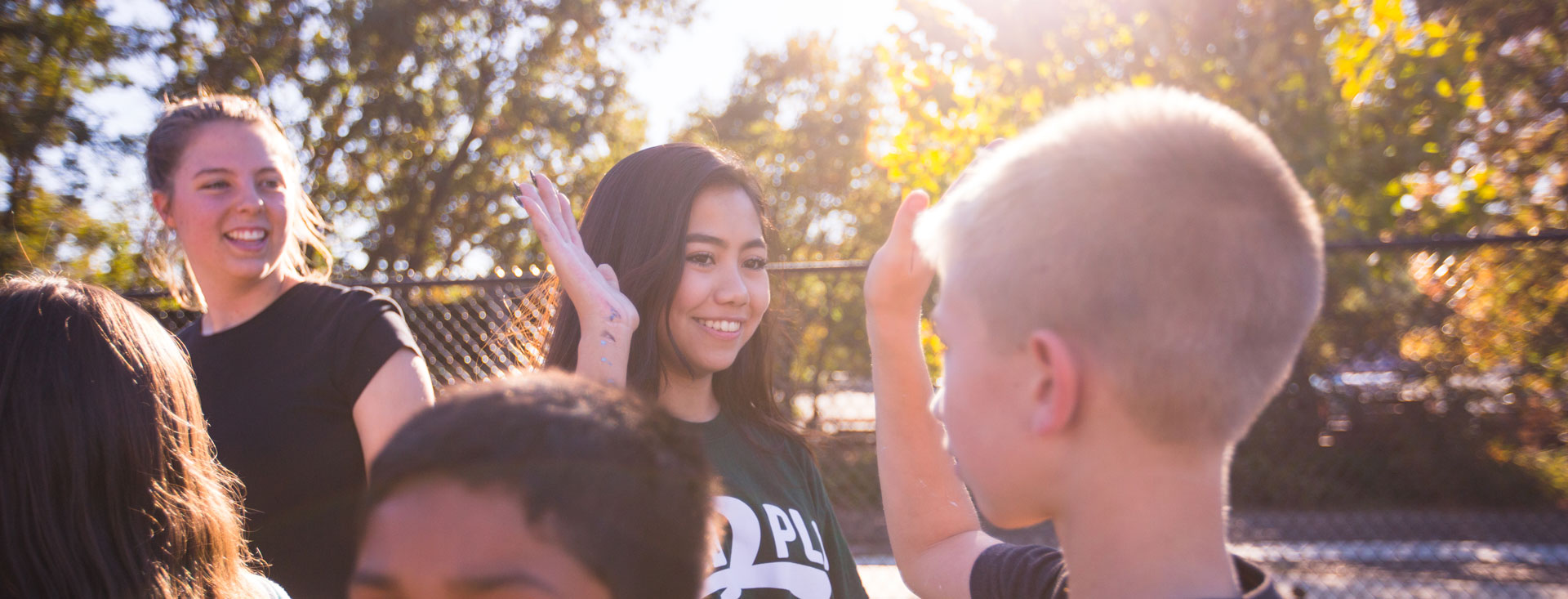I was a practicing psychologist for almost 40 years. When couples would come to my office for therapy, they’d usually say they were having a communication problem. While this might have been true, the more important issue was that they were having trouble being real—both with themselves and with each other.
As I launch this initial Lead2Play blog, I want to dig a little deeper into the meaning and value of being real, or authentic, in all that we do in our work with youth.
To me, being real means:
- Being real as an organization.
At Lead2Play, we are building an organizational culture founded on realness.
As Peter Drucker eloquently said decades ago, “Culture eats strategy for breakfast.” You can have the best strategies in the world, but if your culture sucks, your organization will fail. So how do we keep our culture from sucking?
- We believe in the skills, talents, and capabilities of the youth who lead our programs. Our success rises and falls with them.
- We believe in leading by community, not by individual. Leadership teams are just that—teams. Planning and decisions are made together.
- We believe in being organic, yet organized. Our programs have a framework, but within that framework, kids are encouraged to be as creative as possible.
- We believe that leadership isn’t about titles, position, or labels, but is a process that commands authority.
- We believe our program is about specific opportunities for youth to serve their peers and younger kids.
- We believe in a culture of continuous improvement. When there is a shared leadership culture, efficiencies increase and outcomes are realized.
- Being real with ourselves.
“Can you cure loneliness?” Charlie Brown asked his nemesis, Lucy, who was lounging behind her booth that said, “Psychiatrist, 5 cents.”
“I can cure anything,” she assured him.
“Can you cure deep-down, bottom-of-the-well, black-forever loneliness?”
“All for the same nickel?” she asked.
At times during my counseling career, I felt a little like Lucy—many clients had deep-seated and long-standing problems, and simple answers would not suffice. And while my clients often came expecting advice, I eventually learned to make it clear that my role was more as a mirror than an advice giver. I learned that the most important thing people could gain from our sessions was not what they heard me say but what they were saying to themselves. This led to some remarkable self-discoveries.
Thus, the first step to being real with ourselves is to acquire self-understanding and knowledge.
The second step is to have a determination to know the truth about ourselves. This almost always is more difficult than we imagine. Many of us pride ourselves on being authentic, but authenticity is a tricky term. It involves an ongoing process of uncovering what’s percolating deep within us.
Sometimes we think we’re being real when we express our opinions about what’s wrong with someone else or become angry with that person. But this doesn’t qualify as authentic communication. Attacking, judging, and blaming others is far from what it means to be real and honest.
Authenticity involves a sincere effort to go inside ourselves and uncover what we’re actually experiencing, and then communicate that. True authenticity requires that we pause and check in with ourselves before responding, rather than sloppily venting emotions in a reactive way. Being real with ourselves in this way is key to Point #1, being real as an organization, and Point #3, being real with the youth we serve.
- Being real with the youth we serve.
What does it mean to be real in our relationships with the kids we work with? Leading, teaching, coaching is an art, a science, a passion, and an opportunity. It is an opportunity to prepare young people not only for the world as it is, but for the world as it can be. It’s an opportunity to meet kids where they are and take them where they wish to go. This takes courage. It takes persistence. It takes honest self-reflection in order to continuously improve.
Being real with the kids who are part of Lead2Play means:
- Being relevant. We need to look for ways to meet today’s youth “where they are.” Have you heard the term, “VUCA”? VUCA is an acronym used by the military to describe extreme conditions in Afghanistan and Iraq. It stands for Volatile, Uncertain, Complex and Ambiguous. It represents the world our kids are growing up in:
- Their world is volatile—not steady.
- Their world is uncertain—not secure or guaranteed.
- Their world is complex—not simple.
- Their world is ambiguous—not clear or even congruent at times.
This is the filter in which our middle school and high school students make decisions about their life. We can’t assume that because we might have had a clear path from school to career to family that they will, too. We can’t assume that because we might have come from a stable, two-parent home that they do, too. We need to meet them where they are, socially, economically, technologically, etc.
- Being reliable. Young people should know what is expected of them, and we should know what they expect from us. At Lead2Play, we embrace this simple, but important idea—that our similarities can be the glue that brings us together, and our differences can be the raw materials that enable us to learn, grow, innovate, and do some remarkable things.
- Being realistic. Leading kids today is challenging. It’s a marathon, not a sprint. It takes courage and it take persistence. To be effective, we need to:
- Share the potential we see. Very often, young people are unaware of their potential or aptitude. When we see their potential, we need to let them know. We need to be clear about what we see and express our belief in them.
- Use the word “yet.” When a young person says they just aren’t good in math, science, reading, or sport, they aren’t lying. So far, they may have only see mediocrity in the classroom or on the playing field. You can agree when they say they aren’t good at something . . . yet. Then you can declare that development is possible.
- Help them “own” their growth. Communicate that the only person who can help the young person get better is them. Put the ownership on him or her. Too often we foster a “blame game” culture or a victim mindset that allows kids to blame someone else for their lack of performance. We need to equip them to take responsibility and own their journey.
Dr. Martin Luther King created an enormously inspiring vision in his famous “I Have a Dream” address at the Washington Monument. In that speech he painted a picture of a United States that would be a better place. He talked about the little children, white and black, playing and holding hands in the rural towns in Alabama. He talked about blacks and whites working together in urban centers. That vision had a motivational pull. It created a positive image that people could strive for.
My dream is to create an alternative to today’s mainstream sports culture that focuses primarily on winning and only benefits the most athletic individuals. I believe we can make that a reality with Lead2Play.



George Selleck’s Leading to Play brings GREAT HOPE FOR THE FUTURE. It provides both effective outcomes and is cost effective. It is truly transformational.
I have been a student of the game of basketball since the early 1950s. Pound for pound, George Selleck is the greatest player I have ever seen including the likes of Bill Russell, Bob Cousy, Jerry West, Kareem Abdul-Jabbar, Magic Johnson, Michael Jordan, and LeBron James. Perhaps Steph Curry is his equal.
For my money, Lead2Play is as good a youth leadership and character-molding program, utilizing sports as its medium of instruction, as George Selleck was a basketball player. If Lead2Play could take hold in our country as something akin to when the YMCA first came into being, our world will be a qualitatively better place to live for the whole human family. The movement has already begun in India and my hope is that it catches fire here.
I have been a student of the game of basketball since the early 1950s. Pound for pound, George Selleck is the greatest player I have ever seen including the likes of Bill Russell, Bob Cousy, Jerry West, Kareem Abdul-Jabbar, Magic Johnson, Michael Jordan, and LeBron James. Perhaps Steph Curry is his equal.
For my money, Lead2Play is as good a youth leadership and character-molding program, utilizing sports as its medium of instruction, as George Selleck was a basketball player. If Lead2Play could take hold in our country as something akin to when the YMCA first came into being, our world will be a qualitatively better place to live for the whole human family. The movement has already begun in India and my hope is that it catches fire here.